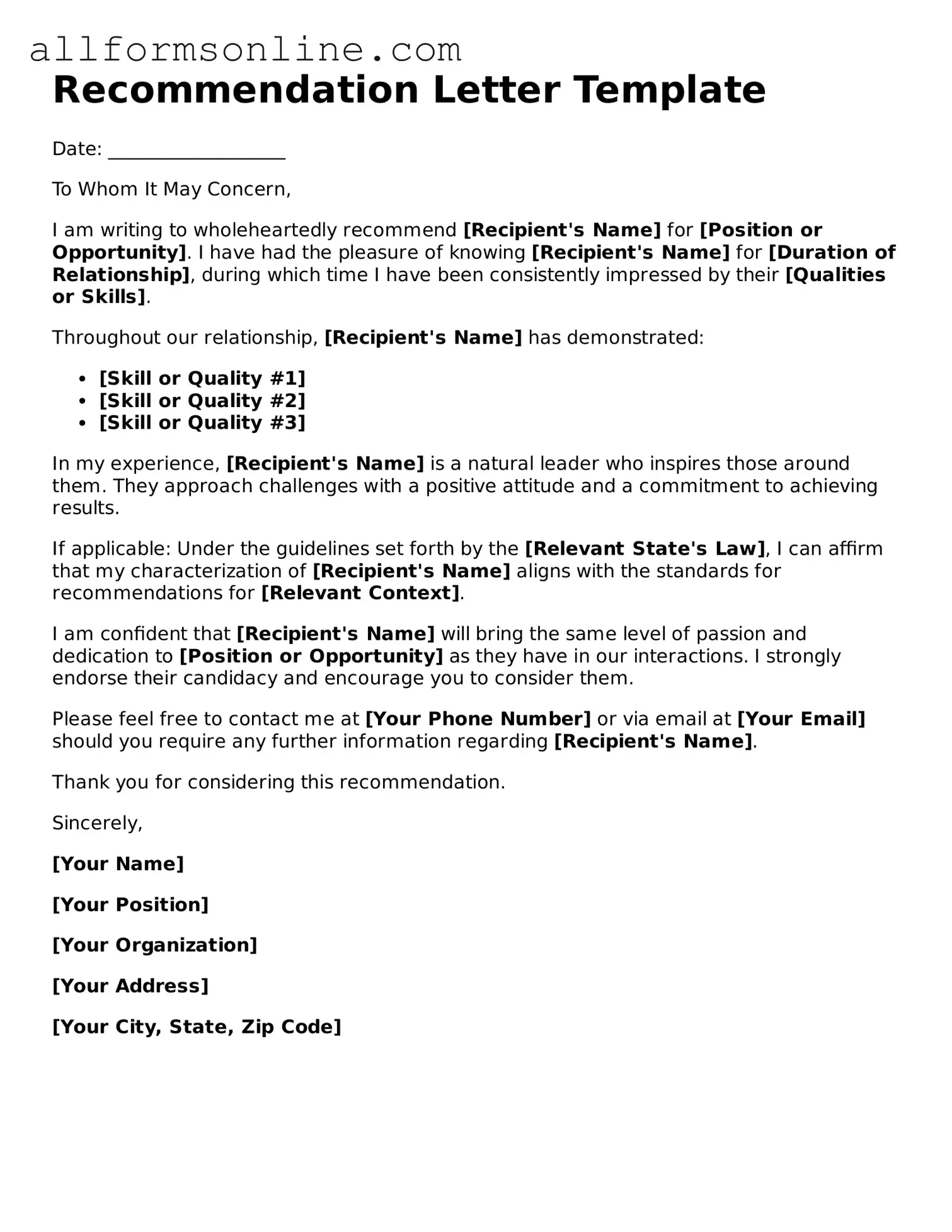What is a Recommendation Letter form?
A Recommendation Letter form is a document used to request a letter of recommendation from someone, such as a teacher, employer, or mentor. This form helps organize the necessary information and makes it easier for the recommender to provide a detailed and personalized letter.
Who should I ask to write my recommendation letter?
Choose someone who knows you well and can speak positively about your skills, experiences, and character. This could be a teacher, employer, coach, or volunteer supervisor. Ensure that the person you ask is familiar with your achievements and can provide specific examples.
What information should I include in the Recommendation Letter form?
Include your full name, contact information, the purpose of the recommendation (e.g., college application, job application), and any relevant deadlines. You may also want to provide details about your accomplishments, experiences, and goals to help the recommender write a more tailored letter.
How do I request a recommendation letter?
Approach your chosen recommender politely, either in person or through email. Present the Recommendation Letter form and explain why you are asking them. Be clear about the deadline and provide any additional information they may need to write a strong letter.
What should I do if my recommender is busy?
If your recommender is busy, be understanding. Offer to give them more time or suggest an alternative recommender. If they agree to write the letter, check in with them politely as the deadline approaches, but don’t pressure them.
Can I edit the recommendation letter once it is written?
Generally, you should not edit a recommendation letter. It’s important that the letter reflects the recommender’s genuine thoughts and opinions. However, you can discuss any specific points you would like them to emphasize before they finalize the letter.
How long should a recommendation letter be?
A typical recommendation letter is usually one page long, consisting of about 300 to 500 words. It should be concise while still providing enough detail to support your application. The recommender should focus on key qualities and experiences that make you a strong candidate.
Is it appropriate to follow up after sending the Recommendation Letter form?
Yes, it’s appropriate to follow up. A polite reminder a week or two before the deadline can be helpful. Express gratitude for their time and assistance. This shows you value their support and keeps your request on their radar.
What should I do after receiving the recommendation letter?
Once you receive the recommendation letter, thank your recommender sincerely. You can do this through a handwritten note or a thoughtful email. If you are applying for a specific opportunity, let them know how it went and keep them updated on your progress.
Are there any common mistakes to avoid when requesting a recommendation letter?
Avoid waiting until the last minute to ask for a letter. Don’t provide vague information or neglect to give context about your goals. Also, refrain from pressuring your recommender. Respect their time and expertise, and express your appreciation for their help.
